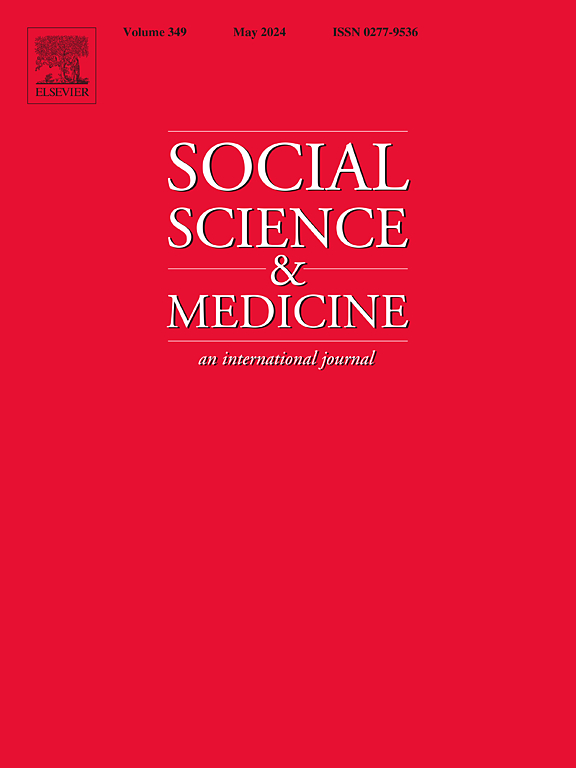Strategies for recruiting participants underrepresented in clinical research: A scoping review
IF 5
2区 医学
Q1 PUBLIC, ENVIRONMENTAL & OCCUPATIONAL HEALTH
引用次数: 0
Abstract
Despite the 1993 National Institutes of Health Revitalization Act's mandate regarding underrepresented groups in clinical research, broad representation in clinical research is still lacking, making generalizability more difficult. Additionally, the extent of research that defines actionable strategies to encourage participation of a variety of patients in clinical research is unclear. This scoping review aimed to map evidence-based strategies for clinical research recruitment of underrepresented groups identified in the 1993 NIH Revitalization Act. Using the Preferred Reporting Items for Systematic Reviews and Meta-Analyses extension for Scoping Reviews (PRISMA-ScR) framework, articles were included if they: (1) reported strategies used for adult patient recruitment, selection, or enrollment in human subjects research; (2) focused on recruiting underrepresented groups; (3) took place within the United States; and (4) were either randomized controlled trial designs, prospective or retrospective cohort studies, cross-sectional designs, quasi-experimental designs, or qualitative studies. We selected 67 articles which reported efforts to recruit underrepresented groups to have broad generalizability of treatment effects. The most successful strategies reported in the literature included recruiting in clinical/healthcare and community settings; using electronic health records and health/disease registries to identify patients; snowball sampling; newspaper and social media advertising; and mass mailing of letters. This paper offers a comprehensive review of the evidence-based recruitment strategies and materials for recruitment of groups that are historically underrepresented in a variety of clinical research studies, thus providing a set of recommendations for future researchers who aim to conduct scientifically rigorous clinical research studies with broad patient samples.
招募临床研究中代表性不足的参与者的策略:范围综述
尽管1993年的国家卫生振兴法案对临床研究中代表性不足的群体进行了授权,但临床研究中仍然缺乏广泛的代表性,这使得推广更加困难。此外,确定可操作策略以鼓励各种患者参与临床研究的研究程度尚不清楚。本综述旨在为1993年NIH振兴法案中确定的代表性不足群体的临床研究招募制定循证策略。使用系统评价和荟萃分析扩展范围评价的首选报告项目(PRISMA-ScR)框架,文章被纳入,如果它们:(1)报告了用于成人患者招募、选择或入组人类受试者研究的策略;(2)重点招募代表性不足的群体;(三)发生在美国境内;(4)随机对照试验设计、前瞻性或回顾性队列研究、横断面设计、准实验设计或定性研究。我们选择了67篇文章,这些文章报道了招募代表性不足的群体的努力,以获得广泛的治疗效果。文献中报道的最成功的策略包括在临床/医疗保健和社区环境中招募;使用电子健康记录和健康/疾病登记来识别患者;滚雪球抽样;报纸和社交媒体广告;大量邮寄信件。本文全面回顾了在各种临床研究中历史上代表性不足的群体的循证招募策略和材料,从而为未来的研究人员提供了一套建议,这些研究人员旨在开展科学严谨的临床研究,并提供广泛的患者样本。
本文章由计算机程序翻译,如有差异,请以英文原文为准。
求助全文
约1分钟内获得全文
求助全文
来源期刊

Social Science & Medicine
PUBLIC, ENVIRONMENTAL & OCCUPATIONAL HEALTH-
CiteScore
9.10
自引率
5.60%
发文量
762
审稿时长
38 days
期刊介绍:
Social Science & Medicine provides an international and interdisciplinary forum for the dissemination of social science research on health. We publish original research articles (both empirical and theoretical), reviews, position papers and commentaries on health issues, to inform current research, policy and practice in all areas of common interest to social scientists, health practitioners, and policy makers. The journal publishes material relevant to any aspect of health from a wide range of social science disciplines (anthropology, economics, epidemiology, geography, policy, psychology, and sociology), and material relevant to the social sciences from any of the professions concerned with physical and mental health, health care, clinical practice, and health policy and organization. We encourage material which is of general interest to an international readership.
 求助内容:
求助内容: 应助结果提醒方式:
应助结果提醒方式:


